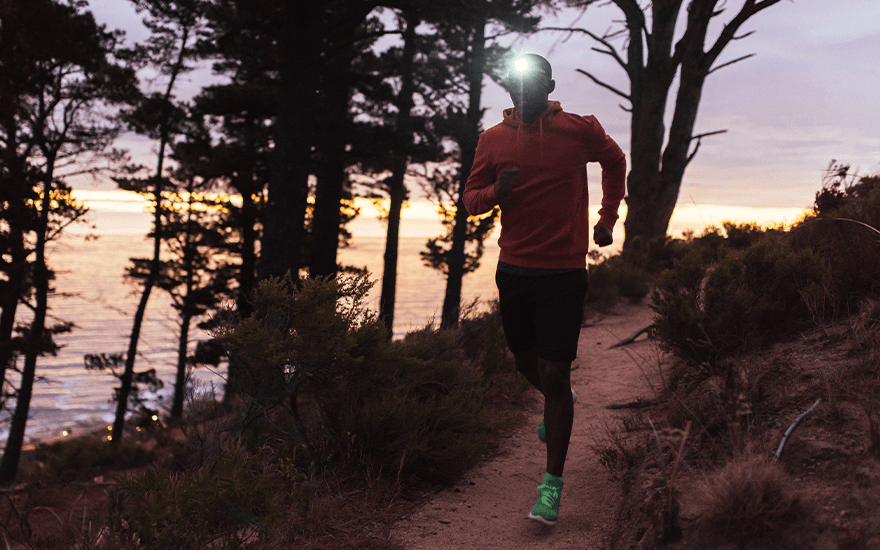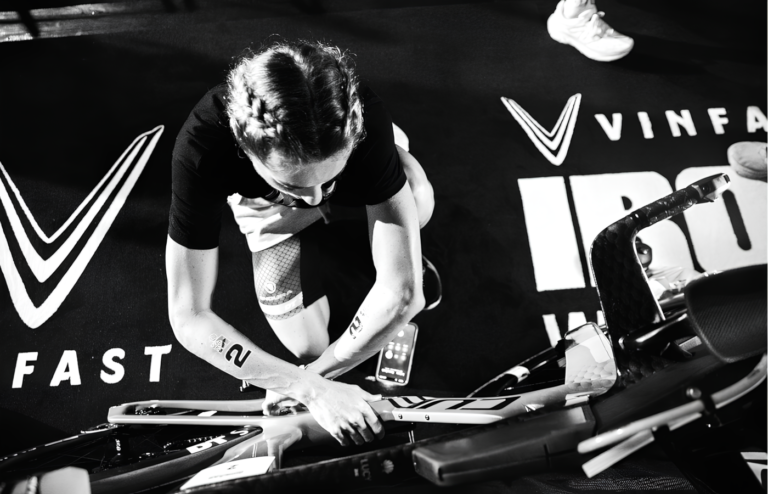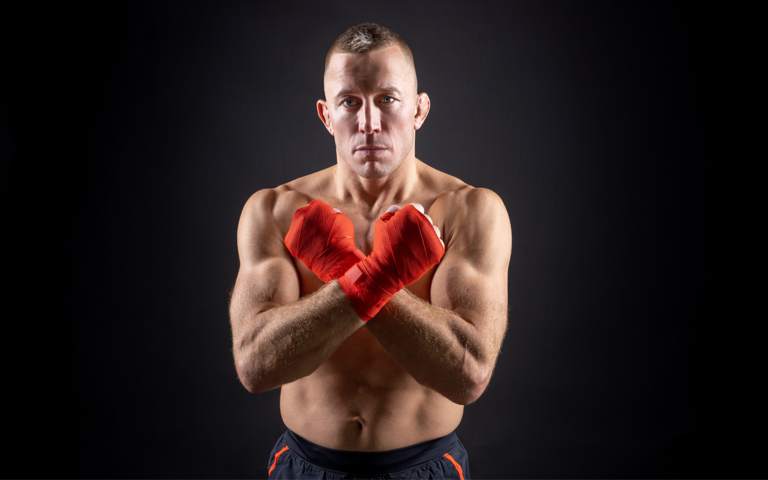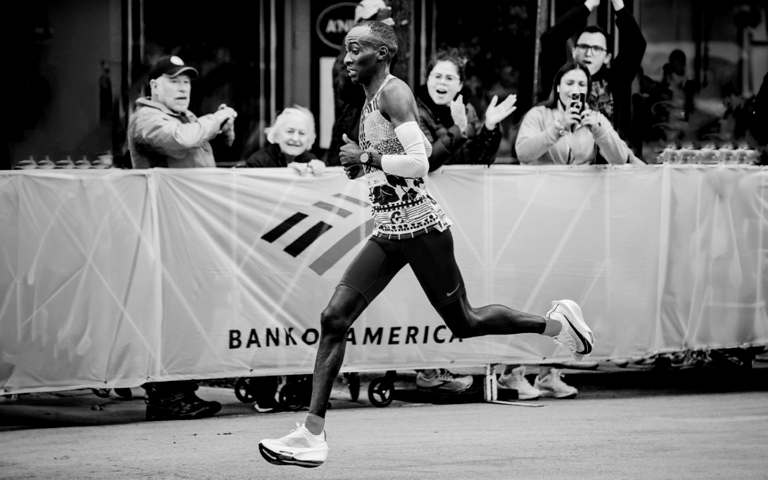Just one more loop.
The term insanity is often labeled against ultramarathon runners—a small collection of souls who gain pleasure from the relentless pursuit of a finish line tens of miles into the distance.
But what if there was no finish line?
Imagine the conclusion is totally dependent on outlasting everyone else in the field. A world where having a greater level of mental fortitude is the aim of the game.
This is the reality of backyard ultras, an endurance quest that demands god-like levels of cardiovascular capacity and leather-coated soles to withstand the harsh terrain.
Attrition springs to mind, a one-word description of a backyard ultra, which those who have dared to take on the task would no doubt agree with—but there’s so much more to the rapidly rising racing phenomenon.
In an attempt to discover more about this hardcore category of ultrarunning, Muscle and Health spoke to Mark Marchant, founder and race director of Greener Miles Running, to discover more about the level of insanity required to take part.
What is a backyard ultra race?
“We often joke about it. You see people who look fresh and upbeat, then fast forward 12 hours, and everyone looks like they’ve aged 70 years,” Mark told Muscle and Health.
He tells me that runners begin to look like zombies as the first night rolls in during a backyard ultra—the darkness turning head-torch-sporting participants into extras from The Walking Dead.
It’s no surprise when you break down the cold, hard facts of the race format and structure.
In simple terms, runners attempt to complete a 4.167 mile (or 6.7 km) lap around a marked course within one hour, with any remaining minutes—or seconds if you’re unfortunate enough—used to take in fluids, calories, nutrition, stretch, complain, and rest.
When the next hour strikes, only runners at the starting line and willing to continue on remain in the hunt remain. And those who miss out on the time stamp or simply can’t muster up the strength to grind through the lactic acid are eliminated.
Races will continue, witnessing the sun’s rising and setting, various weather changes and considerable mood fluctuations until only ONE runner remains. That’s right, it’s all or nothing regarding a backyard ultra format.
The last person standing. One winner. Then, and only then, the race ends.
Officially, backyard ultra races conclude when the remaining competitor completes one whole lap—so putting the brake pedal on is not good if you know the job is done halfway around the course.
Mark set up his first backyard ultra in 2021—the Cow Shed Backyard Ultra—in 2021, just one of several races delivered by his self-made trail running event company.
“The backyard ultra is my favorite race we deliver. Everyone starts every lap in the same position, so you’re always first and last.
Everyone will complete four laps, but you might see a few drop out at that point because their ambition was simply to run their first half marathon. Others may want their first marathon distance.”
From an organizer’s point of view, Mark can put his feet up for most of the event, no doubt a factor when pondering his favorite race—observing the conditions and morale of plucky competitors.
“As long as people are safe, you want to see them go as far as possible.
We had a runner who wanted to quit after 16 hours last year. He was complaining of a tight IT band. He finished his lap in around 50 minutes, so I managed to sneak a word with him.”
Words of wisdom reincarnated the previously broken man. After a warm cup of tea and a few paracetamol later, he ran an additional eight hours, just over 33 miles, despite his desire to launch the towel, never mind throw it.
When did the first backyard ultra take place?

If you’re familiar with the trail running community, you’ve likely heard of the Barkley Marathons or at least scrolled past it on one of the various streaming services.
Without a doubt, Barkley is the most famous and coveted of its kind. Its race director, Gary ‘Lazarus Lake’ Cantrell, is the brains behind the well-documented event and first-ever backyard ultra.
Cantrell is a pioneering and iconic figure—he coined ultrarunning’s resident madman and evil genius behind Big Dog’s Backyard Ultra—the sport’s inaugural race on the grounds of his property in Bell Buckle, Tennessee, in 2011.
“It’s a tribute to a human’s ability to just continually push that boundary of what’s possible further and further out,” Cantrell says in a video promoting the event.
Tim Englund’s name will forever be associated with the event, the first winner after recording 18 laps. Compare that with 2023’s world championships winner, Harvey Lewis, who conquered the loop 108 times, accumulating a staggering distance of 450 miles over five days, equivalent to the entire length of Florida.
Lewis told CNN he embodied the honey badger as his spirit animal because of its ability to keep getting up after endless knockdowns, ate a smorgasbord of plant-based food which equated to over 40,000 calories, consumed cola and electrolyte drinks—but not water—and ended up speaking gibberish to those left on the fourth and final day.
It’s hardly an appealing advert for those who are backyard ultra curious, but that, in part, is where the magic of the event lies.
Lewis describes the feeling of being unstoppable: “There was some sort of place where my brain took over … and the body finally surrendered to my mind.”
He recalls feeling “on cloud nine” upon reaching the promised land, “one of the biggest highs of my life. I couldn’t describe it, especially when it’s such a rigorous, challenging goal.”
That emotion is now matched by hundreds per year, over 400 races spawning worldwide, from the cliffs and flood plains of the Loxton Riverfront in Southern Australia to the Lazy J Ranch in Zambia, the likes of Kazakhstan, Venezuela, Vietnam and Panama, all with their own races.
This is a clear sign of a colossal level of backyard community growth in every corner of the globe.
What are the rules of a backyard ultra race?

There are quite a few, all of which need to be adhered to to maintain the officiality of the race:
The course must have a loop of precisely 6,7056 km.
Starting Corral
- Measures to fit the entire starting field
- The corral stays the same size throughout the event
- Participants must be in the starting corral at the bell
Starts
- Each loop starts precisely one hour after the last
- The warning is given three, two, and one minute before the start
- All participants must start at the bell (no late starts)
Loops
- Participants may not leave the course until each loop is completed, except for restrooms
- No non-participants on the course (including eliminated runners)
- No personal aid during a loop (standard aid stations are allowed)
- Each loop must be completed within an hour to be counted, including the final lap
- No artificial aids (including trekking poles)
- Slower runner must allow passes
Timing
- Timing of the loops is optional.
Winner/Results
- The winner is the last person to complete a loop
- All others are technically DNF
- Results of each runner in terms of distance covered are to be given
- If no runner can complete one more loop than anyone else, there’s no winner
Cap
- The race is open-ended.
From an organizer’s point of view, Mark also has numerous other obstacles and sidenotes to consider, all of which must be monitored throughout the hours runners compete.
“It sounds so petty, but kids were running alongside the runners outside of the course— which is totally harmless—but if that’s picked up on video, some could say that runner has a pacer.
“That sounds pathetic, but technically, a runner could be disqualified.
Mark also informs us that “every time a lap starts, you need to do a Facebook live stream” to spot potential foul play, such as a runner being handed a water bottle as they begin their next loop—called outside support.
Acceptable margins, some bordering on harsh, but rules are rules.
“Common sense does come into decisions. A water bottle wouldn’t be a major problem, but we need to be careful as viewers scrutinize streams.”
Is there a perfect race strategy for a backyard ultra?
There should be a perfect race strategy in statistical and scientific terms—but that’s different from how ultra-running goes.
To finish each race in a Backyard-style event, you only need a pace of 14 minutes and 24 seconds.
That might sound like a lazy Sunday stroll, but let’s think about it. After 30 miles? 60? 100? That’s when things really start to get tricky.
The key is to pace yourself and conserve your energy. Over a marathon-distance run, the last thing you want to do is burn out early and need more stamina to finish strong. So, as tempting as it may be to go all-out in the race’s early stages, resist the urge.
Listen to your body, and adjust your pace as needed. Take advantage of the walking breaks between laps to catch your breath, refresh, and recharge.
Remember, the last man-standing race is all about endurance, not speed.
Optimum loop finish time
Mark alludes to the sweet spot ranging between “50 and 52 minutes“, the optimum time to complete the loop at a maintainable and comfortable pace while allowing time to take in much-needed hydration and nutrition.
Still, there could be a better deal of wiggle room.
“In those ten minutes, you could change your shoes and socks, have a cup of tea, and it’s not too long, so you’re not sitting around potentially getting stiff.”
When you break it down, it doesn’t matter when you finish your loop—it’s just that you do.
Lewis, who came second behind Frenchman Guillaume Calmettes in 2017, finished loop number 56 with only two seconds to spare.
He completed the next loop in 41 minutes before succumbing and allowing Calmettes to secure the one and only winning slot two laps later.
Nutrition and fuelling
Every backyard event will have an event village, a no man’s land and a place of homely solace for runners—albeit for a blink-and-you-‘ll-miss-it time frame.
Here, the ultra’s glowing community spirit can be witnessed and absorbed, tents popping up to form a makeshift rural town, all boasting crews and supporters in attendance to motivate their runners.
Among the sea of tents will rise a cocktail of smells and scents, the sight of food trucks, temporary appliances and pre-made goods backyard staples.
What you eat could decide your race, what you drink may gain you three loops—or it could derail your best-laid plans.
Take Stephanie Simpson, a winner of Big’s Backyard Ultra courtesy of remaining on her feet for 43 hours, who religiously and methodically ate and drank something every lap.
Her race diet is more associated with eating competitions, featuring burgers, waffles, pretzels, chips, candies, chocolates, McDonald’s breakfast sandwiches, coffee, ginger ale, peanut butter and jam sandwiches, bananas, and fries.
In contrast, the first-ever female winner of Big’s Backyard Ultra—Maggie Gutrel—took a more scientific approach throughout her 60-hour odyssey.
A sample lap for Gutrel would look like this: begin with 350ml of Tailwind Endurance Fuel; complete the lap; eat some mashed potatoes (roughly 165 calories) to reach her caloric and electrolyte goals for the hour.
She would painstakingly monitor her sodium intake, ultimately defining how often she would sip on Endurance Fuel.
So what can you take from that? It ultimately is down to the individual, with different bodies and metabolisms able to absorb and digest foods at different rates.
“You often see that the guys who are really at the top of the game are meticulous with their nutrition,” said Mark.
“We had a runner in 2022 who had pre-packaged portions of carbohydrates from different sources: rice balls, pasta, boiled potatoes. He had enough variety, so he didn’t get sick of eating the same thing.”
Backyard ultras differ when it comes to nutrition because of their sheer uniqueness—the thought of gulping down wraps, burgers, and enchiladas in any other long or ultra distance is a punishable crime but a reality when you’re plodding for more than a day.
“We have pizza stations within the event village, so you can slice between loops. It has carbs and fats and is calorie dense, but you would probably be sick if you ate that during a fast race.”






